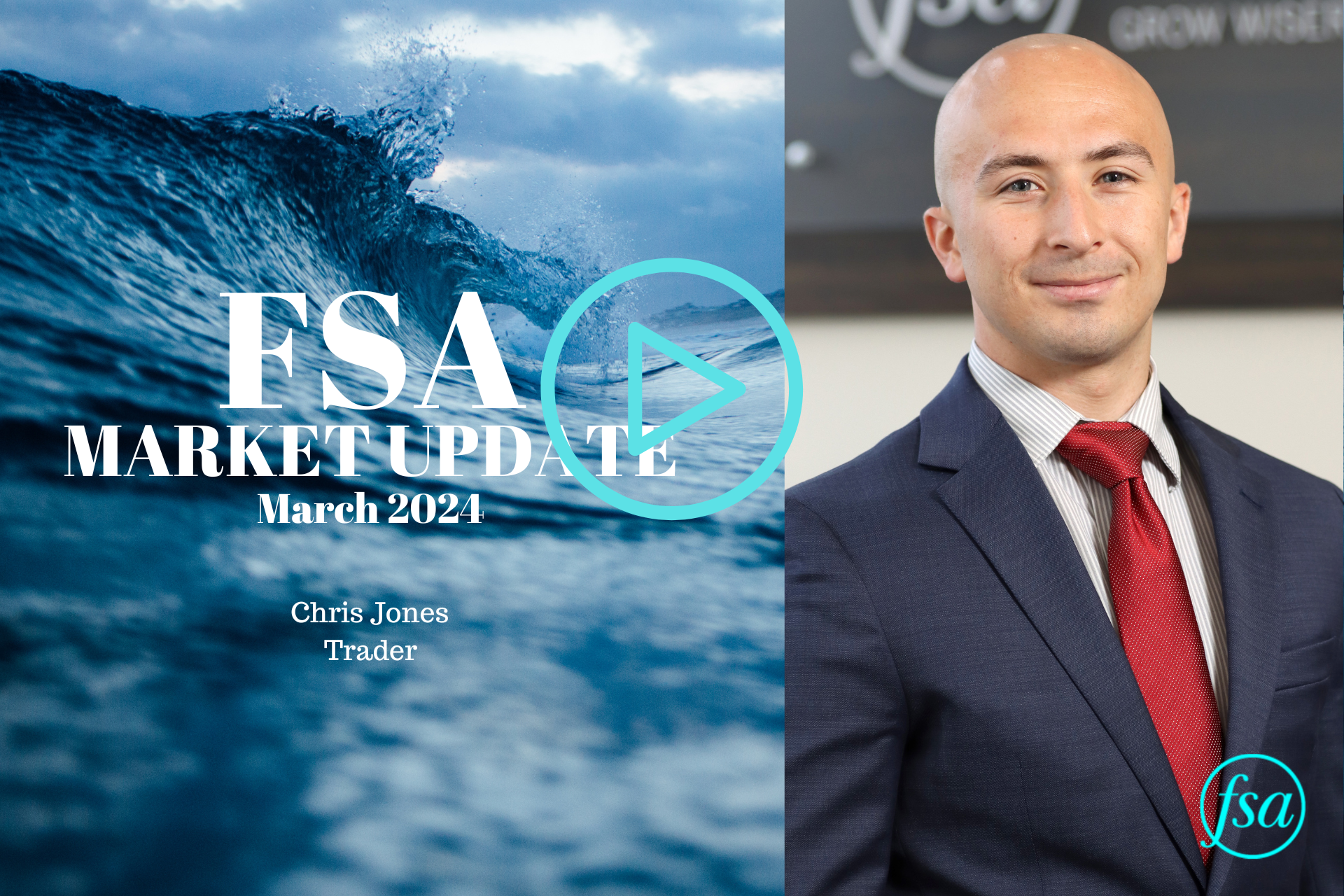What’s the big deal about yield curve inversion? Derek Kravitz, FSA Investment Analyst, discusses this phenomenon in our August 2019 video market update.
August Stock Market Update
Hi everybody. My name is Derek. I’m the investment analyst here at Financial Services Advisory here to give you this market update. Today we’re going to talk about yield curve inversions. You may have heard about it in financial media recently because of a lot of volatility in the month of August, and today we’re going to talk about what that is and what it means for an investor’s portfolio.
So what is a yield curve inversion? Basically what this is is that when you have a shorter-term Treasury note, such as the two year, that yields more than a longer-term note, such as the ten year – it doesn’t have to be the ten year – it could be the 20 year or even the 30 year – this is known as yield curve inversion. The theory goes that yield curve inversion signifies that businesses and investors are parking their money in Treasuries instead of investing it in capital expenditures such as new buildings, trucks, materials, etc., the kind of things that push the economy forward. If nobody is investing, then they just park their money in Treasuries, and the yield curve flattens and potentially inverts. This has in the past been a telltale sign of the looming recession. It should be noted here, too, that just because a yield curve inverts doesn’t necessarily mean the market’s going to go down. It is often seen that 12 months after a yield curve inversion stock markets are actually higher than they were when it inverted, meaning that, just because of an inversion, doesn’t mean necessarily that it’s time to get out of stocks.
Here at FSA, why we use technical analysis and our safety net, is that we’re just going to keep staying invested until we actually see the market react with a strong and decisive manner to the downside before we actually exit prematurely because, as can be seen in this chart, there can potentially still be a lot of upside even before the market pulls back. A good example of this is that in 2006, when there was a yield curve inversion before the financial crisis, you still had 22 months of stock market gains up until the pullback. As Ned Davis research points out, however, even if the stock market continues to chug higher post yield curve inversion, there has usually and historically been a spike in daily moves, volatility to both the upside and downside following a yield curve inversion. So whereas maybe we had sleepier days pre-inversion, maybe now we see one to two percent moves both in the up and down directions post yield curve inversion. We’ve already seen an uptick in volatility in the month of August, in large part because of trade tensions between the US and China.
So what does this mean for an investor and particularly an investor with FSA? Well, as we discussed earlier, just because a yield curve inversion happens potentially preceding a recession, it is not foolproof and it does not necessarily mean markets are automatically going to go down. Here at FSA, part of the reason we use technical analysis is we wait for the markets to give us the signal that it’s time to sell to cash. You can be assured that we’re going to continue watching economic updates and market activity so that if you do see a economic slowdown that leads to a stock market pullback that we will react accordingly.
Thank you for watching. This has been the market update. My name is Derek, and I’m the investment analyst here at FSA. If you ever have any questions about this or anything else, please feel free to reach out. Thank you.
FSA’s current written Disclosure Brochure and Privacy Notice discussing our current advisory services and fees is available at www.FSAinvest.com/disclosures or by calling 301-949-7300.




